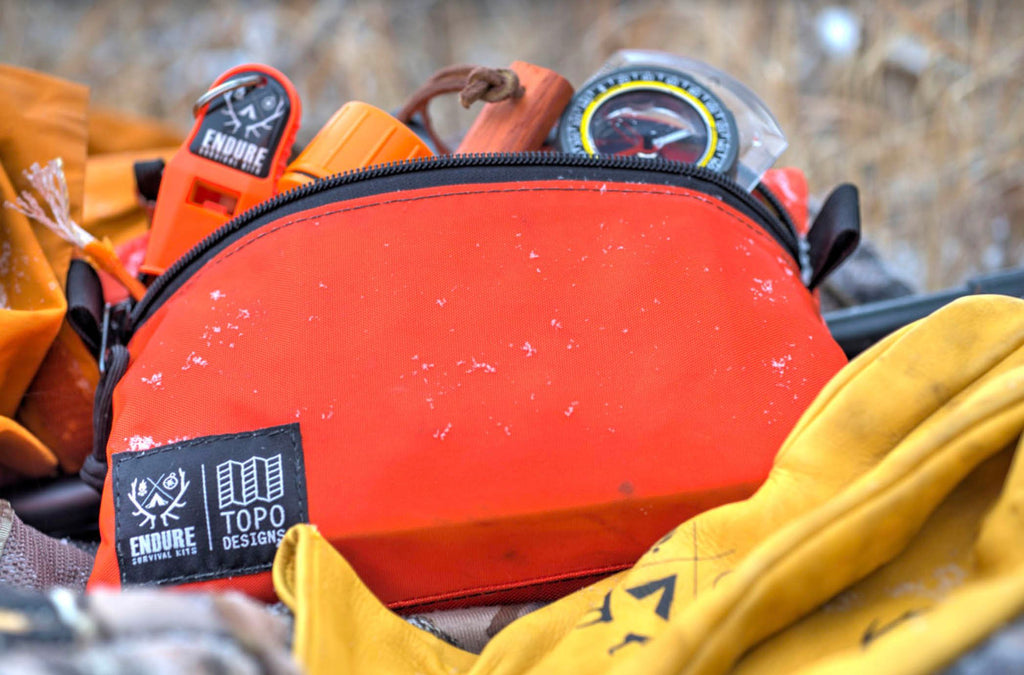How to Build a Smart Survival Kit
Why is it so difficult to choose what items to include in your survival kit?
It is hard to successfully choose trustworthy survival kit items that are proven to save your life. This is because of all the misinformation and inferior products sold. I realized this when I attempted to seek out the survival information I needed to build my own survival kit. It was many years ago when I scoured the internet for information about what to put in my survival kit. I read through many blogs and even survival books only to find what I later found out to be misleading information that led me to purchase inferior products.
When I produced the film Outdoor Survival for Colorado Parks and Wildlife I realized how much time and money I had wasted on survival gear that may not have actually saved my life if I had been faced with a real-world survival situation. To top it off I gifted survival kits to my groomsmen who were in my wedding. There are the most important people in my life and I spent a lot of money and put a lot of time and effort into curating what I thought were sufficient kits only later to find out that gear was basically worthless.
Gear that appeared in the original kits I purchased years back (what you should NOT put in your survival kit):
- Mylar Emergency Blankets
- Flint and Steel Kits
- A one ball whistle
- A plastic signal mirror
- A match case with built-in compass and whistle with "strike anywhere matches"
- A wire saw
- Iodine Tablets
Let's talk real quick about why these above items may not be the best to trust your life with.
- Mylar Emergency Blankets come in just about every survival kit sold. They are sold by the thousands every year. Yet, we go as far as to say they are not worth the few dollars you pay for them. The mylar material can tear easily and the blankets require you to use both hands holding the blanket around you restricting movement and ultimately restricting you from performing necessary survival tasks like building a fire.
- Flint and steel kits are primitive. Filnt and steel is an ancient technique from many many years ago and SHOULD NOT be relied on in modern-day survival situation. Why make it hard on yourself when there are much easier and faster ways to start a fire? Primitive flint and steel kits produce very little sparks and are very difficult to use, especially in harsh conditions.
- A one ball whistle (referee whistle) is better than nothing but shouldn't be relied on to penetrate fog and timber.
- A plastic signal mirror will not reflect the sun's light nearly as far as a signaling mirror made with tempered glass.
- Strike "anywhere" matches really mean strike nowhere. The only matches you may want to consider carrying are Stormproof Matches that will light in a downpour and stay lit under water.
- Wire saws are flimsy and very difficult to use. We do not recommend using them as they can break easily as well. Find a fixed blade saw that that will not break and will cut on the forward and backward motion of your arm.
- Have you ever tasted water treated with Iodine? The foul taste is a sign of old technology. Chlorine Dioxide is a much more trustworthy water purifier and tastes much better.
What should be in a smartly chosen survival kit (what you SHOULD put in your survival kit):
- A trusted shelter that will instantly provide warmth and protection from the elements.
- A fire starter that contains a trusted heat source that requires no moving parts and fuel that will light in harsh conditions
- A high powered whistle
- A signaling mirror you can aim
- Trail tape
- A backup source for water such as a collapsible water bottle and water purification tablets.
For more information please visit our Survival School


Leave a comment: